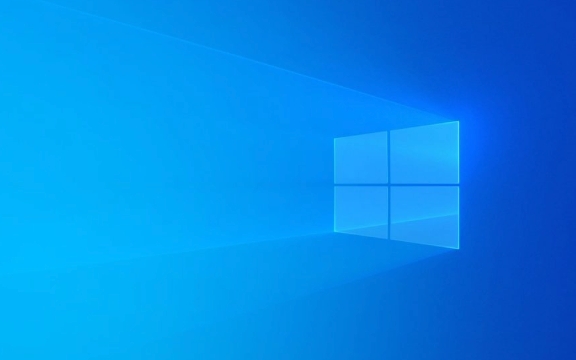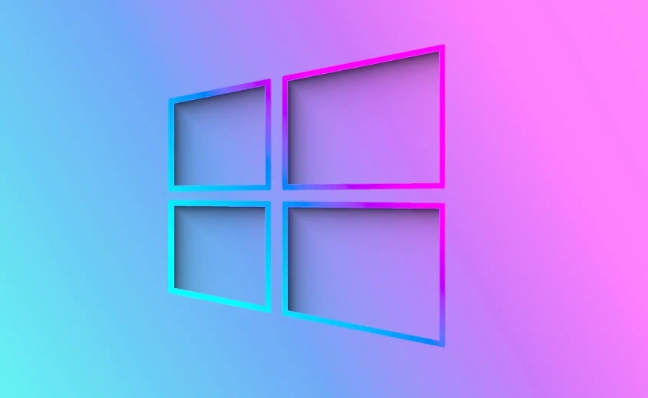Run a full scan using Windows Security by opening Settings, navigating to Privacy & security > Windows Security > Virus & threat protection, selecting Full scan under Scan options, and clicking Scan now; ensure real-time protection is enabled. 2. Use Microsoft Defender Offline scan by going to Scan options in Windows Security, selecting Microsoft Defender Offline scan, and clicking Scan now to restart and scan before Windows loads, effectively detecting rootkits and deep-seated malware. 3. Manually check for high CPU, disk, or network usage, unfamiliar processes in Task Manager, browser redirects, pop-ups, slow performance, or unexpected ransomware messages, and research suspicious processes online. 4. Optionally use a trusted on-demand third-party scanner like Malwarebytes or HitmanPro to detect threats missed by Windows Security, but avoid installing multiple real-time antivirus programs to prevent conflicts. Keep Windows and software updated, avoid suspicious downloads and links, and maintain regular backups to minimize risks. Using Windows Security regularly, performing offline scans when needed, and employing a secondary scanner if symptoms persist ensures effective malware detection and removal in Windows 11.

If you suspect your Windows 11 PC might be infected with malware, it's important to act quickly. Here’s how to check for and deal with potential threats effectively.

1. Run a Full Scan with Windows Security (Built-in Antivirus)
Windows 11 comes with Microsoft Defender Antivirus (part of Windows Security), which is active by default and regularly updated. It’s a solid first line of defense.
Steps:

- Press Windows I to open Settings.
- Go to Privacy & security > Windows Security > Virus & threat protection.
- Under "Current threats," click Scan options.
- Select Full scan, then click Scan now.
A full scan checks all files and running programs. It takes longer than a quick scan but is more thorough. If malware is found, Windows Security will attempt to remove or quarantine it automatically.
Tip: Make sure real-time protection is turned on (it should be by default). You can check this under "Virus & threat protection settings."

2. Use Microsoft Defender Offline Scan (For Stubborn Malware)
Some malware hides deep in the system and can’t be caught while Windows is running. The offline scan boots your PC into a special environment to catch these threats.
Steps:
- In Windows Security, go to Virus & threat protection > Scan options.
- Scroll down and click Microsoft Defender Offline scan > Scan now.
- Your PC will restart and run a scan before Windows loads.
This scan can detect rootkits and other low-level malware that might evade regular scans.
3. Check for Suspicious Activity Manually
Even with antivirus software, it helps to look for signs of infection:
- High CPU, disk, or network usage with no clear cause (check via Task Manager: Ctrl Shift Esc).
- Unfamiliar processes running in Task Manager.
- Browser redirects, pop-ups, or new toolbars you didn’t install.
- Slow performance or frequent crashes.
- Unexpected password prompts or ransomware messages.
If you see strange processes, right-click them in Task Manager and select Search online to check if they’re legitimate.
4. Use a Trusted Third-Party Malware Scanner (Optional)
While Windows Security is strong, using a second-opinion tool can help catch anything missed.
Recommended free tools:
- Malwarebytes – Excellent at detecting adware and PUPs (potentially unwanted programs).
- HitmanPro – Lightweight cloud-based scanner that works well alongside Defender.
Note: Don’t install multiple real-time antivirus programs—they can conflict. Use these as on-demand scanners only.
Final Tips
- Keep Windows and all software updated.
- Avoid downloading cracked software or clicking suspicious email links.
- Regularly back up your data.
Basically, use Windows Security for routine scans, run an offline scan if you're still unsure, and consider a second opinion from Malwarebytes if symptoms persist. Most threats in Windows 11 are caught early if updates and protection are enabled.
The above is the detailed content of How to check for malware in Windows 11. For more information, please follow other related articles on the PHP Chinese website!

Hot AI Tools

Undress AI Tool
Undress images for free

Undresser.AI Undress
AI-powered app for creating realistic nude photos

AI Clothes Remover
Online AI tool for removing clothes from photos.

Clothoff.io
AI clothes remover

Video Face Swap
Swap faces in any video effortlessly with our completely free AI face swap tool!

Hot Article

Hot Tools

Notepad++7.3.1
Easy-to-use and free code editor

SublimeText3 Chinese version
Chinese version, very easy to use

Zend Studio 13.0.1
Powerful PHP integrated development environment

Dreamweaver CS6
Visual web development tools

SublimeText3 Mac version
God-level code editing software (SublimeText3)
 How to Change Font Color on Desktop Icons (Windows 11)
Jul 07, 2025 pm 12:07 PM
How to Change Font Color on Desktop Icons (Windows 11)
Jul 07, 2025 pm 12:07 PM
If you're having trouble reading your desktop icons' text or simply want to personalize your desktop look, you may be looking for a way to change the font color on desktop icons in Windows 11. Unfortunately, Windows 11 doesn't offer an easy built-in
 Fixed Windows 11 Google Chrome not opening
Jul 08, 2025 pm 02:36 PM
Fixed Windows 11 Google Chrome not opening
Jul 08, 2025 pm 02:36 PM
Fixed Windows 11 Google Chrome not opening Google Chrome is the most popular browser right now, but even it sometimes requires help to open on Windows. Then follow the on-screen instructions to complete the process. After completing the above steps, launch Google Chrome again to see if it works properly now. 5. Delete Chrome User Profile If you are still having problems, it may be time to delete Chrome User Profile. This will delete all your personal information, so be sure to back up all relevant data. Typically, you delete the Chrome user profile through the browser itself. But given that you can't open it, here's another way: Turn on Windo
 How to fix second monitor not detected in Windows?
Jul 12, 2025 am 02:27 AM
How to fix second monitor not detected in Windows?
Jul 12, 2025 am 02:27 AM
When Windows cannot detect a second monitor, first check whether the physical connection is normal, including power supply, cable plug-in and interface compatibility, and try to replace the cable or adapter; secondly, update or reinstall the graphics card driver through the Device Manager, and roll back the driver version if necessary; then manually click "Detection" in the display settings to identify the monitor to confirm whether it is correctly identified by the system; finally check whether the monitor input source is switched to the corresponding interface, and confirm whether the graphics card output port connected to the cable is correct. Following the above steps to check in turn, most dual-screen recognition problems can usually be solved.
 Want to Build an Everyday Work Desktop? Get a Mini PC Instead
Jul 08, 2025 am 06:03 AM
Want to Build an Everyday Work Desktop? Get a Mini PC Instead
Jul 08, 2025 am 06:03 AM
Mini PCs have undergone
 Fixed the failure to upload files in Windows Google Chrome
Jul 08, 2025 pm 02:33 PM
Fixed the failure to upload files in Windows Google Chrome
Jul 08, 2025 pm 02:33 PM
Have problems uploading files in Google Chrome? This may be annoying, right? Whether you are attaching documents to emails, sharing images on social media, or submitting important files for work or school, a smooth file upload process is crucial. So, it can be frustrating if your file uploads continue to fail in Chrome on Windows PC. If you're not ready to give up your favorite browser, here are some tips for fixes that can't upload files on Windows Google Chrome 1. Start with Universal Repair Before we learn about any advanced troubleshooting tips, it's best to try some of the basic solutions mentioned below. Troubleshooting Internet connection issues: Internet connection
 How to clear the print queue in Windows?
Jul 11, 2025 am 02:19 AM
How to clear the print queue in Windows?
Jul 11, 2025 am 02:19 AM
When encountering the problem of printing task stuck, clearing the print queue and restarting the PrintSpooler service is an effective solution. First, open the "Device and Printer" interface to find the corresponding printer, right-click the task and select "Cancel" to clear a single task, or click "Cancel all documents" to clear the queue at one time; if the queue is inaccessible, press Win R to enter services.msc to open the service list, find "PrintSpooler" and stop it before starting the service. If necessary, you can manually delete the residual files under the C:\Windows\System32\spool\PRINTERS path to completely solve the problem.
 How to run Command Prompt as an administrator in Windows 10?
Jul 05, 2025 am 02:31 AM
How to run Command Prompt as an administrator in Windows 10?
Jul 05, 2025 am 02:31 AM
To run command prompts as administrator, the most direct way is to search through the Start menu and right-click "Run as administrator"; secondly, use the Win X shortcut menu to select "Command Prompt (Administrator)" or "Windows Terminal (Administrator)"; you can also open the run window through Win R and enter cmd and press Ctrl Shift Enter to force running as administrator; in addition, you can set shortcut properties to achieve automatic running as administrator. All the above methods require administrator permission and confirmation through UAC. Pay attention to security risks during operation.








